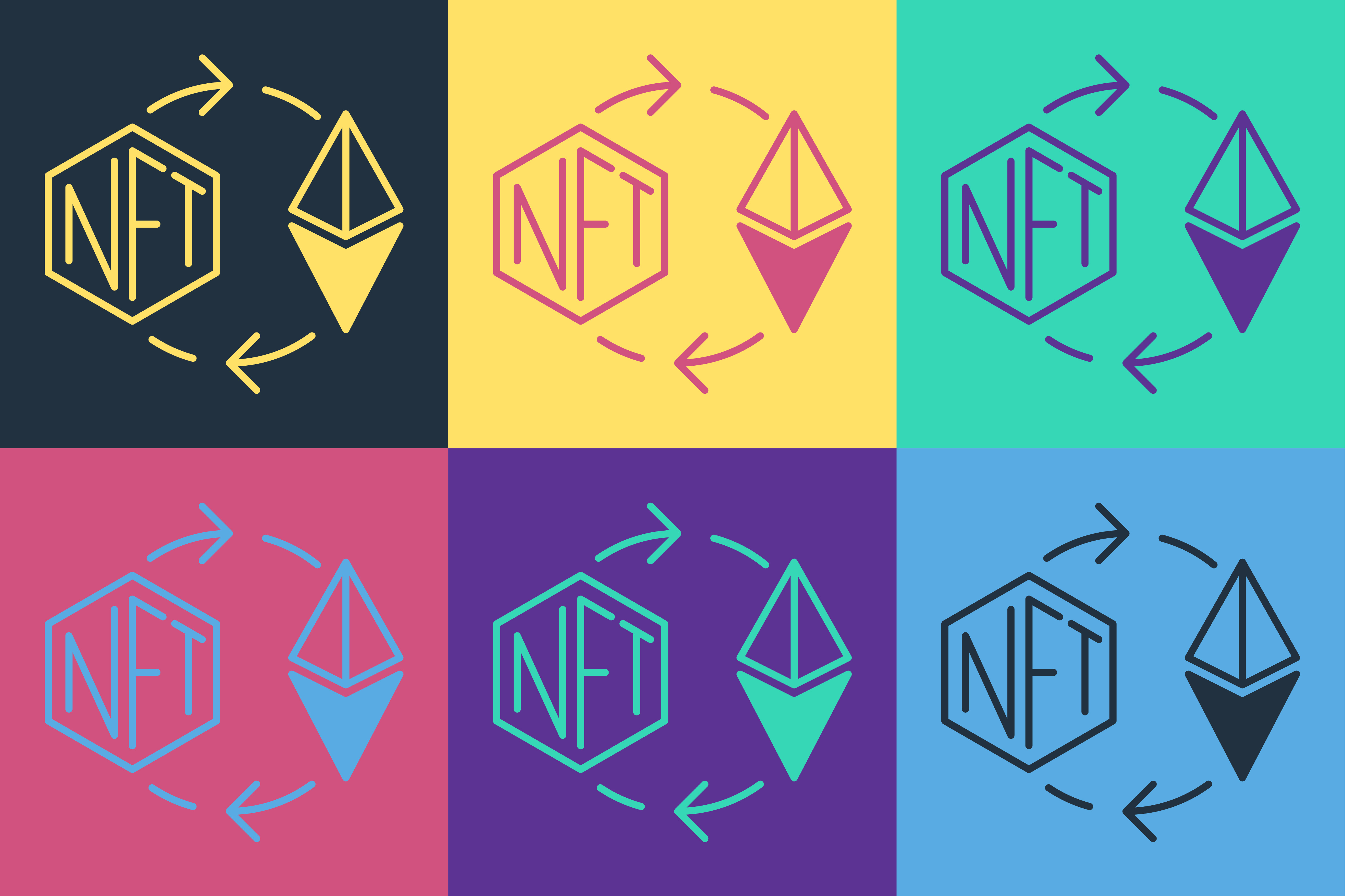How Many Cryptocurrencies Are There? [+What You Need to Know About Them]
Cryptocurrencies have become increasingly popular recently. As a result, one question commonly arises – how many cryptocurrencies are there? Now, this may seem like a simple question. However, the number of cryptocurrencies is constantly changing. Thus, how many cryptocurrencies are there does not have a straightforward answer. That said, we can take a snapshot of the total number of cryptocurrencies at any given time.
In this article, we’ll examine how many cryptocurrencies exist. We’ll also discuss why there are so many cryptocurrencies and how the increasing number of coins and tokens impacts the market. Finally, we’ll examine the different types of cryptocurrencies.
Ready to discover the answer to how many cryptocurrencies are there? Let’s dive in!
-> Are you wondering what cryptocurrency is and how it works? Here’s what you need to know before reading about how many cryptocurrencies are there – What is Cryptocurrency?
How many cryptocurrencies are there?
How many cryptocurrency exchanges are there?
Why are there so many cryptocurrencies?
Are there too many cryptocurrencies?
Different Types of Cryptocurrencies
How many cryptocurrencies have failed?
Summary

How many cryptocurrencies are there?
There are currently over 22,500 cryptocurrencies worldwide, according to CoinMarketCap! However, keep in mind the exact number of cryptocurrencies is constantly changing. That’s because new cryptocurrencies are created all the time – and old cryptos are often no longer actively traded or supported.
When asking, “how many cryptocurrencies are there?” it’s also important to remember that different sources may have slightly different numbers. The number of cryptocurrencies listed on an exchange or price-tracking website will vary depending on how the platform defines a cryptocurrency and which cryptos they choose to list. For example, CoinMarketCap vets all crypto projects before listing them. Any coin or project believed to be a scam does not get listed.
The fact that there are more than 22,500 cryptocurrencies comes as a surprise to many people. Especially considering there were only 67 cryptocurrencies in 2013 – just ten years ago. But that’s just how fast the world of crypto changes!
The Growth of Cryptocurrency – How Many Cryptocurrencies Are There (By Year)
The following table shows how many cryptocurrencies are there at the end of each year, starting in 2013, according to CoinMarketCap historical data. This information demonstrates how much the cryptocurrency market has grown in recent years.
| Year | How many cryptocurrencies were there? |
| 2013 | 67 |
| 2014 | 517 |
| 2015 | 577 |
| 2016 | 663 |
| 2017 | 1353 |
| 2018 | 2073 |
| 2019 | 2388 |
| 2020 | 4118 |
| 2021 | 8554 |
| 2022 | 8932 |
| 2023 | 22555 and counting! |
As you can see, the cryptocurrency market has exploded in just a decade. But, of these thousands of crypto coins and tokens, what are the top 3 cryptocurrencies? Let’s take a look.
What are the top 3 cryptocurrencies?
The three largest cryptocurrencies by market capitalization are:
- Bitcoin (BTC): Bitcoin is the first and most well-known cryptocurrency. It has a dominant position in the market and is the largest cryptocurrency by market capitalization. Bitcoin was created in 2009 by an unknown person (or group of people) using the pseudonym Satoshi Nakamoto. Learn more about Bitcoin here – What is Bitcoin?
- Ethereum (ETH): Launched in 2015, Ethereum is the second-largest cryptocurrency by market capitalization. It’s a decentralized blockchain platform that enables developers to build and deploy decentralized applications, or “smart contracts,” using its native cryptocurrency, Ether. Learn more about Ethereum here – What is Ethereum?
- Binance Coin (BNB): Binance Coin is the native cryptocurrency of the Binance exchange, one of the largest cryptocurrency exchanges in the world. BNB was created in 2017 and is used to pay for transaction fees on the exchange and for other purposes such as trading and investing.
Keep in mind that the cryptocurrency market can be highly volatile. Therefore, cryptocurrency rankings can change rapidly.
In addition to “how many cryptocurrencies are there?” you may wonder, “how many cryptocurrency exchanges are there?”. Here’s some data.
How many cryptocurrency exchanges are there?
Currently, there are over 540 cryptocurrency exchanges available worldwide. These exchanges vary in terms of the cryptocurrencies they support, the fees they charge, the security measures they have in place, and the countries they operate in.
Some of the most popular crypto exchanges include:
- Binance
- Coinbase
- Kraken
- KuCoin
- Bitfinex
In addition to these top crypto exchanges, many other options are available for those looking to buy, sell, or trade cryptocurrencies. However, it’s essential to do your research and carefully evaluate the features and reputation of any exchange before using it.
Why are there so many cryptocurrencies and crypto exchanges? Let’s take a look.
Why are there so many cryptocurrencies?
Once people uncover the answer to how many cryptocurrencies are there, they often wonder – “why are there so many cryptocurrencies?”. Several factors have contributed to the proliferation of cryptocurrencies in recent years.
Here are some of the most significant reasons why there are so many cryptocurrencies.
- Open-source nature – the open-source nature of many blockchain technologies has made it relatively easy for developers to create new cryptocurrencies and build on existing platforms. This has led to a wave of innovation in the space, with developers experimenting with new features and use cases for cryptocurrencies.
- Demand for financial system alternatives – the growing demand for alternatives to traditional financial systems has also contributed to the increasing number of cryptocurrencies and crypto projects. Cryptocurrencies offer a decentralized, secure, and fast way to transfer value without intermediaries such as banks or payment processors. This has made cryptocurrencies attractive to individuals and businesses that want to avoid the fees and restrictions associated with traditional financial systems.
- Initial coin offering (ICO) boom – the ICO boom of 2017 and 2018 also played a significant role in the creation of new cryptocurrencies. During this period, many new cryptocurrencies were created through the sale of tokens to investors, often with the promise of future returns or access to new platforms or services. While the ICO boom has since cooled off, it contributed to a large number of new cryptocurrencies being created.
Overall, there are so many cryptocurrencies due to the growing interest and demand for decentralized digital money. But are there too many cryptocurrencies out there?
Are there too many cryptocurrencies?
Whether or not there are too many cryptocurrencies is a matter of perspective and depends on individual opinions and needs. Here are two views.
Perspective #1
The sheer number of cryptocurrencies makes it challenging to navigate the market and identify projects with long-term value or potential. Additionally, the diversity of the market can also contribute to fragmentation, making it difficult to achieve widespread adoption of any single cryptocurrency.
Perspective #2
The market diversity offers a range of options for investors and users. In addition, the competition between cryptocurrencies spurs innovation and drives the market forward.
Which perspective do you share?
Different Types of Cryptocurrencies
Knowing of how many cryptocurrencies are there, you might wonder about the different types of cryptocurrencies. There are many types of cryptocurrencies, each with unique features and use cases. That said, there are ten main types of cryptocurrency.
The most common types of cryptocurrencies include:
- Payment Coins: These cryptocurrencies are designed to be used as a means of payment or exchange, similar to traditional currencies. Bitcoin and Litecoin are examples of payment coins.
- Platform Coins: These types of cryptocurrencies are used to access and use decentralized platforms, such as smart contract platforms. Ether and EOS are examples of platform coins.
- Privacy Coins: privacy coins provide increased privacy and anonymity in transactions. Monero and Zcash are examples of privacy coins.
- Stablecoins: stablecoins are intended to maintain a stable value, usually by being pegged to a traditional currency or asset. Tether and USD Coin are examples of stablecoins.
- Utility Tokens (aka Exchange Tokens): These types of cryptocurrencies are issued by a cryptocurrency exchange. They are primarily used as a means of payment for services provided by the exchange, such as trading fees or withdrawal fees. However, they can also be used to access premium features or receive discounts on fees. Some of the most well-known exchange tokens include Binance Coin (BNB), Huobi Token (HT), and FTX Token (FTT).
- Security Tokens: These are cryptocurrencies that represent ownership of a real-world asset, such as stocks, real estate, or commodities. Security tokens are subject to securities regulations in many jurisdictions.
- Governance Tokens: governance tokens are used to participate in the decision-making processes of decentralized protocols or networks. Examples include Uniswap’s UNI token and Compound’s COMP token.
- Non-Fungible Tokens (NFTs): an NFT is a unique digital asset used to represent ownership of a specific item, such as art, music, or collectibles. Examples include CryptoKitties, Bored Ape Yacht Club, and NBA Top Shot.
- Energy Coins: These types of cryptocurrencies are used to incentivize the generation and consumption of renewable energy. Examples include SolarCoin and Power Ledger.
- DeFi Tokens: DeFi tokens power decentralized financial applications, such as decentralized lending, borrowing, trading, and insurance platforms. These tokens can be used within their respective decentralized finance platforms to govern the protocols and reward users who contribute to the network. Some popular DeFi tokens include Uniswap (UNI), Avalanche (AVAX), and Dai (DAI).
These are just some examples of the different types of cryptocurrencies that exist. As you can see, each type of cryptocurrency serves a different purpose and meets different needs within the market.
How many cryptocurrencies have failed?
It is difficult to determine precisely how many cryptocurrencies have failed. However, estimates suggest that a significant number of cryptocurrencies have failed. In fact, according to CoinGecko, an average of 947 cryptocurrencies fail each year. Since 2014, over 7,000 cryptocurrencies have failed!
Many factors can contribute to the failure of a cryptocurrency. For instance, a crypto project may fail due to a lack of adoption, technological issues, regulatory challenges, poor execution, scams, etc. But cryptocurrency is like any market – it will continue to evolve, and some projects will succeed while others will fail.
A Summary of How Many Cryptocurrencies Are There
There are currently tens of thousands of different cryptocurrencies available worldwide – and more are developed every day!
Due to this swift expansion, we will undoubtedly see exciting developments in the cryptocurrency market in the coming years—for instance, increased adoption, regulation, stability, and new use cases.
While the world of cryptocurrencies can be complex and ever-changing, it is a fascinating and dynamic space worth exploring for anyone interested in finance, technology, or innovation. Of course, there are risks associated with investing in cryptocurrencies. But there is also a lot of potential for growth and innovation! So, whether you are an experienced investor or a curious newcomer, there has never been a more exciting time to be involved in the world of cryptocurrencies.
More Helpful Crypto Content
What is NFT vs Crypto: Understanding the Key Differences and Similarities
Wondering – what is NFT vs crypto? Unlock the secrets of these digital assets, explore their similarities and differences, and learn how they’re shaping the digital future.
Understanding Leverage Trading in Crypto: How to Amplify Your Gains (+Possible Risks)
Learn what leverage trading crypto is and how it works. Plus, the top exchanges for leverage trading crypto.
3 NFT Smart Contract Examples (Solidity, Vyper and Rust) + What Each Function Means
Explore 3 NFT smart contract examples (in Solidity, Vyper, and Rust) and learn what each function in the code does.



